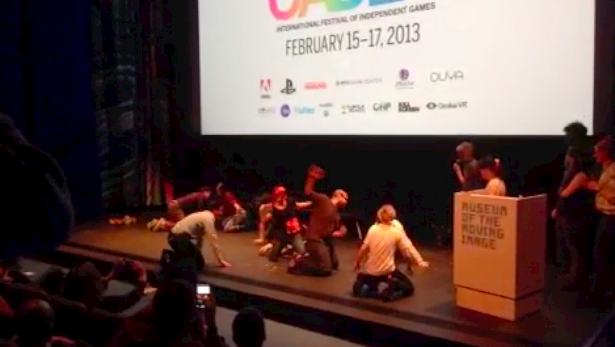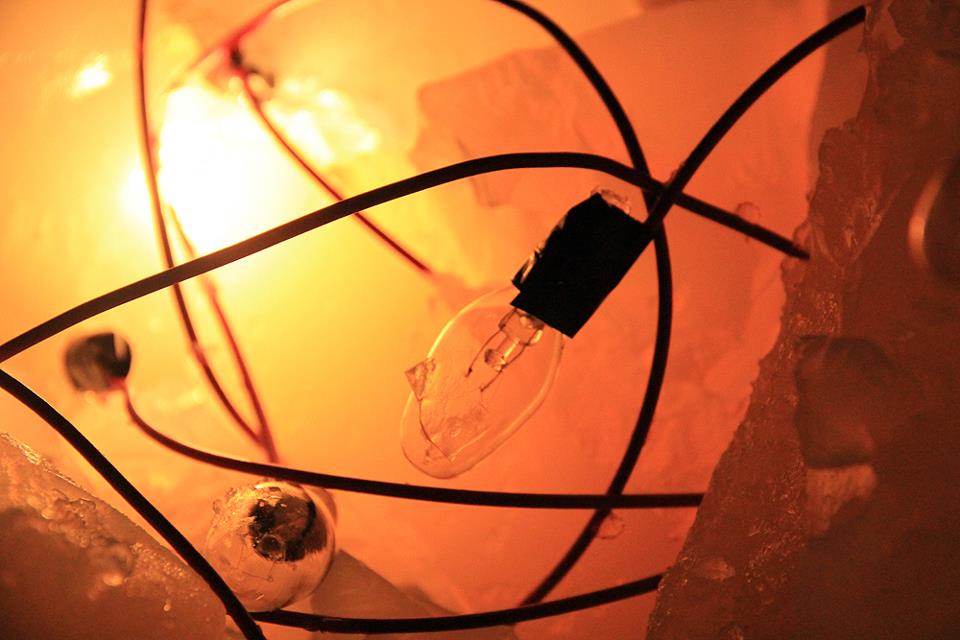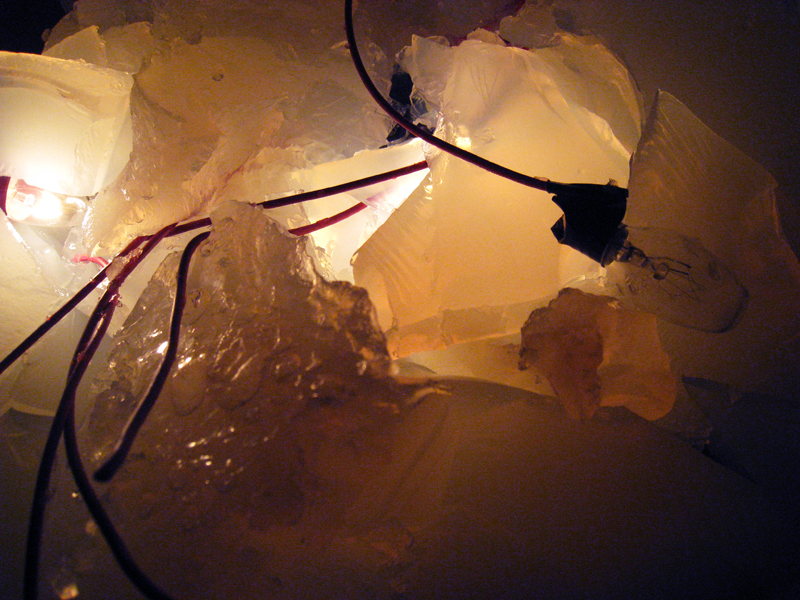Student Rachel Law Wants You to Play This Weekend at "Playthings"!
Rachel Law is an MFA Design & Technology candidate in her 2nd year, with a background in philosophy and conceptual art. At IndieCade this past weekend, she and the Parsons team, lead by Colleen Macklin, triumphed over NYU’s formidable game design crew. We wanted to find out more about the Parson team’s secrets for domination, and more about Rachel herself. Enjoy!
AMT: Before IndieCade, I overheard you mention your extreme confidence that the Parsons’ team would beat (dare I repeat your exact term, “slaughter”?) the team from NYU. What made you so confident?
Rachel Law: I think I was just psyching myself to win! I also knew we had an awesome team captain (Colleen) and our team was really super –we had people who were more performative and had experience outside traditional game design, which made us a more versatile and well-rounded team.
AMT: Can you describe for those who weren’t there how the competition was set up?
RL: Iron Game Design is a 1 hr stage challenge where two teams (NYU vs Parsons) were given a theme and a secret ingredient/object that had to be used in the game. This year’s theme was sequels, and the secret ingredient was a vase of flowers. Halfway through, the referees would give each team a ‘curveball’ or twist, which each team had to work into their game. Our curveball was a set of keys. Once the time was up, audience members would play the game and vote for the winner.
AMT: How did you come up with your game plan for a “Joust sequel with swingers and deflowering.”
RL: It was a stage-game, and we knew that to win we had to make a giant spectacle. That usually involves awkwardly humiliating body positions, sexual innuendos and ultraviolence. A Joust sequel with swingers & deflowering covered all bases!
AMT: Why do you think Parsons prevailed over NYU?
RL: NYU did a great job with balancing gameplay and mechanics. But the thing they didn’t consider was context. Their game was good, but it was not made for the stage and the audience couldn’t follow the rules or instructions because it was too complex. We won because our game was easy to understand, had simple rules and most of all, looked really, really fun.
AMT: You mentioned that you weren’t really a “game design person.” What made you want to get involved in this event, and what kind of person are you then?
RL: I’m not much of a game designer, but I love playing games! I believe when an opportunity presents itself, you just take it, because why not??? I’m mostly a visual artist, but I enjoy anything fun.
AMT: What do you like best about the DT program?
RL: That we’re not all techno-evangelists, but actually think about the ethics and processes in technology used to make art. Plus the freedom to pursue your interests, talk to super-interesting people and make work that you care about.
AMT: What course are you most into this semester?
RL: I’m doing an independent study with McKenzie Wark (Lang) and we’re writing a book together! It’s about how people consume databases and narratives as a way to manage desire in a meta-driven society.
AMT: What project has been your favorite since you’ve been here?
RL: I love my thesis project of course, but my favourite was a tripartite I did last year in studio called Godeaters. It was kind of crazy with 100 black-light bulbs encased in quinine jello with motion-sensors and choral music. I nearly got in trouble for that, since it involved submerging a lot of electronics in liquid! The university was worried about safety.
AMT: You gave me info about the upcoming Playthings event. Why are you so excited about this?
RL: I think play and how people play is really the next step in art, media and technology. We talk about game design as the next big thing, but really a lot of game design/gamification relies on antiquated Pavlovian incentive/punishment and can be very restrictive. Play and the state of play–that’s exciting! How do people play, what kinds of play exist and how things relate and interact with each other, the possibilities are endless!!
AMT: What would you like to say to those students who assume that game or toy design is not artistic, or is too technical for them to participate in and enjoy?
RL: I want them to think about the objects they use everyday – the pen, the paper, the camera, the canvas. Finding new ways to use them, like writing and folding to create word origami or smashing the lens of a camera to create a shattered effect, that’s a kind of play. We play with art, and in playing–that’s our practice. The boundaries between artistic and technical are just mental walls.
AMT: Bonus question! At John Sharpe’s presentation, “Spacewar! Punk rock, & The Indie Dev Scene”, he mentioned the need for more Riot Grrls in game design (among other versions of under-represented communities that came up via the punk/hardcore scene). Would you consider yourself a game (or toy) design Riot Grrl? How do you feel about this statement?
RL: I admire the Riot Grrl movement, and share many of their core beliefs: equality, empowerment and ethical action. However, I don’t consider myself a Riot Grrl at all. The simple reason is that I don’t identify with the language used nor the political culture it sprung from, and I think that’s perfectly fine–there are safe spaces for all kinds of people beyond the label of being a Riot Grrl. To create those spaces, we need a diversity of types–be it women, queer, trans and other marginalised group. By giving them a chance, the game culture scene and development will naturally mature into a more inclusive practice.
AMT: Awesome. Thanks Rachel. Now, lets go create those spaces and play this weekend!






